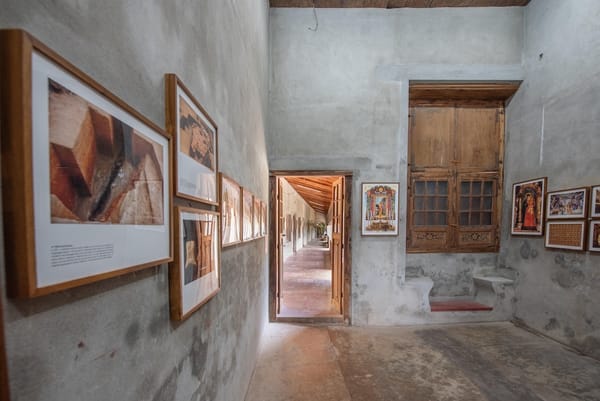Brush types and what they are used for: a complete beginner’s guide
A clear and practical beginner’s guide to different paintbrush types, explaining what each brush does and how to use them confidently. Learn how brush shapes affect technique and improve your painting control.

For anyone beginning their journey as a painter, choosing the right brush can feel overwhelming. With so many shapes, sizes and materials available, it can be difficult to understand which brush is suitable for which purpose. Brushes may appear similar at first glance, but each type is intentionally designed to create distinct marks, gestures and effects. Getting to know your brushes can transform your technique, improve control and help you develop artistic expression with confidence.
This guide introduces the most common brush shapes, explains how they are used and offers helpful advice on selecting and caring for brushes that match your painting style and medium. Whether you work in acrylics, oils or watercolour, understanding your tools is an important step towards becoming a more skilled artist.
Why brush type matters
Brushes are not interchangeable. Each shape is engineered to behave differently on a surface. A flat brush will create a crisp architectural stroke, while a round brush makes smooth curves and fine lines. A fan brush can suggest grass or hair in seconds, while a filbert lends itself to delicate blending. Knowing these characteristics means less frustration and better results.
Beginners often assume they need a large and expensive collection. In reality, a small selection of well chosen brushes is enough to start. The key is learning how to use each brush intentionally rather than collecting many that remain unused.
Understanding brush anatomy
Although brushes vary widely, they share the same basic structure:
- Handle: Usually wooden or acrylic, available in short or long lengths.
- Ferrule: The metal section that holds the bristles in place.
- Bristles or hairs: Natural or synthetic fibres that form the working tip of the brush.
Short handles are common in watercolour and detail work where the artist sits close to the surface. Long handles are standard in acrylic and oil painting, allowing the painter to stand further back and work with broader gestures.
Brush hairs: natural versus synthetic
Brushes are made with either natural hair or synthetic fibre. Both have advantages and are suited to specific mediums.
Natural hair brushes are made from animal fibres such as sable, squirrel or hog. They hold more paint and water, create smooth applications and are prized for softness and spring. They are generally preferred for watercolour and oil painting. However, they can be expensive and require careful maintenance.
Synthetic brushes are made from man-made filaments and are increasingly high quality. They are durable, affordable and more ethical for artists who wish to avoid animal products. They are excellent for acrylics, resist damage from chemicals and can mimic many natural qualities.
Many artists use a mix of both.
Common brush shapes and how to use them
Below are the most widely used brush shapes and the results they produce. Practice with each to understand their range.
Round brush
A round brush has a pointed tip and a rounded full belly. It is extremely versatile and suitable for fine detail, sketching, curved lines and controlled strokes. Press lightly for thin lines or more firmly for thick marks.
Best used for: outlines, details, calligraphy-like strokes, thin to thick transitions.
Works well in: watercolour, gouache, acrylic, oils.
Flat brush
Flat brushes have square ends and long or short bristles. They create straight, accurate strokes and fill areas evenly. They are excellent for sharp edges and geometric shapes.
Best used for: blocking in colour, large areas, bold directional strokes, edging.
Tip: Turn the brush sideways to create very fine lines.
Bright brush
A bright looks similar to a flat brush but has shorter bristles. This allows greater control and pressure. Perfect for thick impasto and short expressive marks.
Best used for: controlled strong strokes, textured or layered paint.
Filbert brush
A filbert has a rounded oval tip, combining the advantages of flat and round brushes. It blends beautifully without leaving harsh edges and can form a range of mark shapes.
Best used for: blending, soft edges, figurative work, natural shapes like flowers and faces.
Many portrait artists rely heavily on the filbert for subtle transitions.
Fan brush
A fan brush spreads its bristles out like a fan. It is used for special textures and soft blending. It can suggest foliage, grass, clouds and hair quickly and naturally.
Best used for: atmospheric effects, texture creation, light blending of colours.
Experiment with dry brushing for interesting natural marks.
Angular or angle shader
This brush has a flat body cut diagonally to a sharp point. It is excellent for precise edges, curved strokes and reaching small corners.
Best used for: painting at angles, controlled shading, petals and leaves.
Detail or rigger brush
A thin long brush used for delicate lines. Originally used for painting rigging on ships, hence the name.
Best used for: fine lines, whiskers, wires, branches, eyelashes and lettering.
Mop brush
A large round brush with soft bristles that holds a significant amount of water or colour. Ideal for creating smooth washes in watercolour.
Best used for: skies, backgrounds, blending large areas, lifting paint gently.
Stencil brush
A stiff round brush with a flat end. Designed for stippling rather than sweeping strokes.
Best used for: stencilling, texture patterns and repetitive decorative work.
Which brushes to start with
For beginners, a practical starting set may include:
- Round brushes in sizes small, medium and large
- One flat brush
- One filbert
- One detail brush
- One fan brush (optional but fun to explore)
This small selection covers nearly all early needs without unnecessary cost.
Choosing brushes for different mediums
The ideal brush depends partly on the paint type.
Watercolour
Soft natural or synthetic brushes that hold water well are best. Round brushes and mops excel.
Acrylic
Synthetic brushes are recommended because acrylic can damage natural hair. Flats, filberts and brights suit acrylic texture.
Oil
Hog bristle brushes are traditional for thick paint and strong techniques. Softer hair works for glazing and fine finishing.
Brush size explained
Brushes are numbered, but sizing varies by manufacturer. As a guide:
- Small sizes such as 0 to 4 are useful for fine details.
- Medium brushes like size 6 to 10 work well for everyday use.
- Large brushes from 12 upward are ideal for backgrounds and broad strokes.
The most important rule is to choose the largest brush that suits the area you are painting. Beginners often restrict themselves to very small brushes and produce tight or timid work.
How to care for your brushes
Good brushes can last many years if maintained well. Basic care includes:
- Rinse brushes thoroughly after use
- Never leave them sitting in water since this warps handles
- Reshape the bristles with fingers while damp
- Store upright or flat with bristles protected
- Use soap designed for artists brushes if possible
For oil paint, clean first with solvent such as turpentine or eco alternatives before washing with soap and warm water. Never use hot water since it can loosen the glue in the ferrule.
Developing confidence with brushes
The most helpful exercise is experimentation. Try each brush loaded with differing amounts of paint, held at various angles and used both wet and dry. Fill a page with test strokes and textures. Observe how pressure and speed alter lines. As familiarity grows, you will begin to choose brushes intuitively based on the marks you wish to make.
Skilled brushwork is not only about technique. It is also about sensitivity to touch, rhythm and intention. The more you practise, the more expressive your painting will become.





